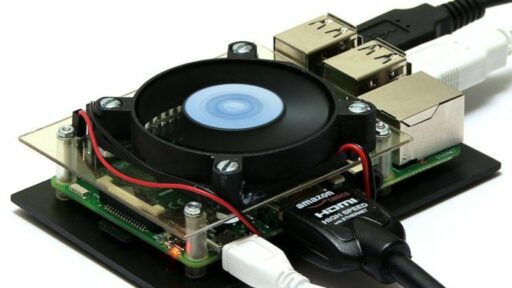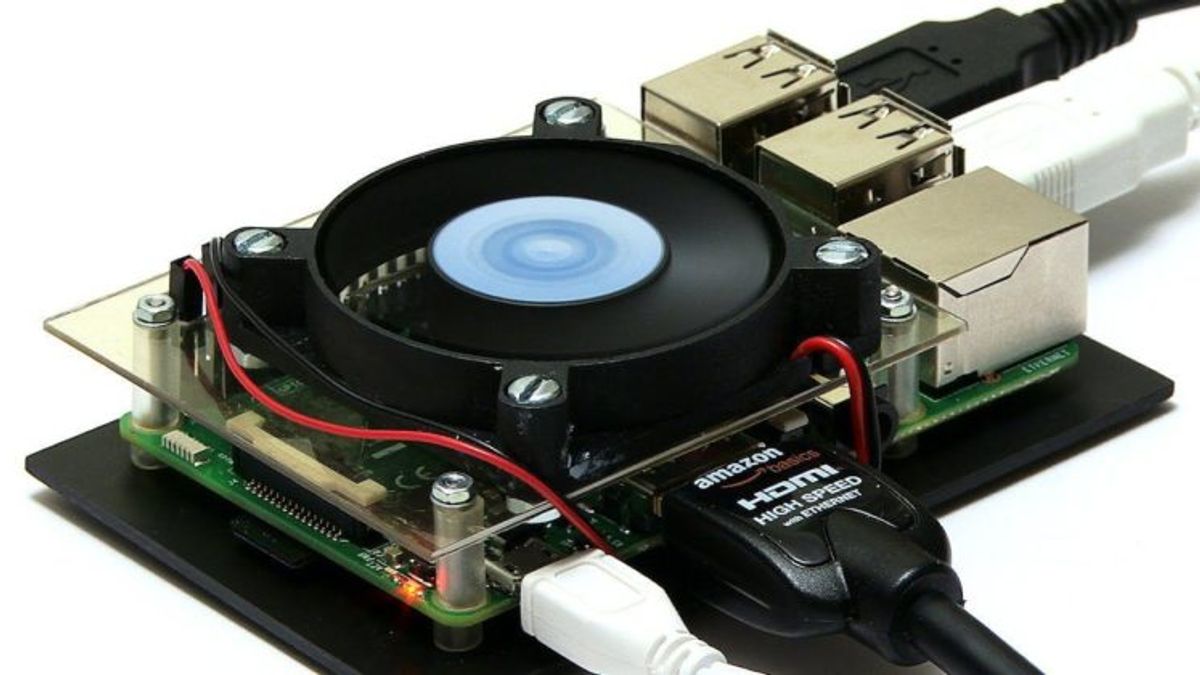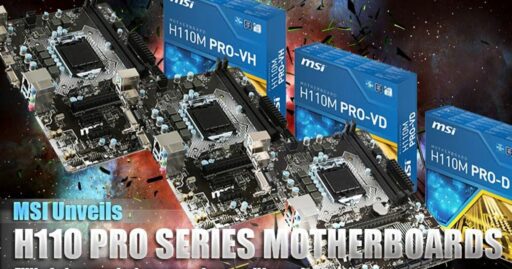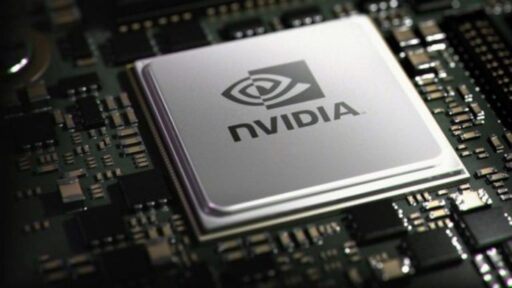The Raspberry Pi, a compact and energy-efficient computer, has emerged as a viable tool for cryptocurrency mining on a budget. This beginner’s guide delves into the essentials of using a Raspberry Pi for crypto mining, from understanding its capabilities to setting it up and optimizing it for maximum efficiency. We’ll explore how to select the right cryptocurrency to mine, the necessary accessories, and the future potential of Raspberry Pi in the crypto mining landscape.
Key Takeaways
- Raspberry Pi offers an affordable and energy-efficient solution for crypto mining, suitable for beginners and cost-conscious miners.
- The selection of the right Raspberry Pi model, compatible accessories, and mining software is crucial for an effective mining setup.
- Choosing the appropriate cryptocurrency to mine on a Raspberry Pi involves analyzing factors like algorithm, difficulty, and community support.
- Optimizing the Raspberry Pi for mining includes tweaking settings, managing heat, and remote monitoring to enhance performance and longevity.
- The future of Raspberry Pi mining looks promising with ongoing innovations and an emphasis on economic viability and environmental sustainability.
Understanding Raspberry Pi and its Capabilities

The Basics of Raspberry Pi in Crypto Mining
The Raspberry Pi is a versatile and compact computer that has gained popularity in the realm of crypto mining, especially among enthusiasts and hobbyists. Its low power consumption and affordability make it an appealing choice for those looking to enter the mining space without significant investment.
While not as powerful as traditional mining rigs, the Raspberry Pi can still contribute to mining operations, particularly for less resource-intensive cryptocurrencies. Here’s a quick overview of what you need to get started:
- A Raspberry Pi board (preferably the latest model for better performance)
- Reliable internet connection
- Mining software compatible with the Raspberry Pi
- A cryptocurrency wallet to store your mined coins
Remember, the key to successful mining with a Raspberry Pi is to choose the right cryptocurrency and mining software that aligns with the hardware’s capabilities.
Hardware Specifications and Performance
When delving into the world of crypto mining with a Raspberry Pi, understanding the hardware specifications and performance is crucial. The Raspberry Pi 4 Model B stands out as a popular choice for enthusiasts, offering a balance between cost and computational power. Below is a snapshot of its key specifications:
| Specification | Detail |
|---|---|
| CPU | Quad-core Cortex-A72 (ARM v8) |
| Clock Speed | 1.5GHz (can be overclocked) |
| RAM | 2GB, 4GB, or 8GB LPDDR4 |
| Connectivity | Gigabit Ethernet, Wi-Fi, Bluetooth |
| USB Ports | 2 USB 3.0 ports, 2 USB 2.0 ports |
| GPIO Pins | 40-pin GPIO header |
| Power Requirement | 5V/3A USB-C power supply |
By optimizing the operating system and enabling hardware acceleration, miners can unlock the full potential of the Raspberry Pi’s hardware. Effective cooling measures are also essential to maintain performance and longevity.
It’s important to note that while the Raspberry Pi can be used for mining, it is not designed to compete with specialized mining hardware in terms of performance. However, with the right setup and expectations, it can be a cost-effective way to experiment with cryptocurrency mining and learn about blockchain technology.
Software and Operating System Choices
When setting up a Raspberry Pi for crypto mining, the choice of software and operating system (OS) is pivotal. Choosing a lightweight operating system can significantly enhance your mining rig’s performance. Raspbian Lite, for instance, is a popular choice due to its minimal resource consumption, which is crucial for maximizing mining efficiency.
Selecting the right mining software is equally important. It should align with the Raspberry Pi’s hardware capabilities and your specific mining goals. Stability, compatibility, and user support are key factors to consider. Here’s a list of considerations when choosing your software:
- Stability and reliability of the mining software
- Compatibility with Raspberry Pi hardware
- User support and documentation availability
- Resource intensity and performance impact
Remember, the software setup is a critical component in the guide to building a crypto mining rig. It’s not just about selecting components; it’s about optimizing for efficiency and potentially diversifying your mining portfolio for profits.
Setting Up Raspberry Pi for Crypto Mining

Choosing the Right Raspberry Pi Model
When venturing into the realm of crypto mining with a Raspberry Pi, selecting the appropriate model is crucial. The Raspberry Pi 4 Model B stands out as the premier choice, boasting a quad-core ARM Cortex-A72 processor and options for 2GB, 4GB, or 8GB of RAM. This model’s enhanced capabilities ensure a more efficient mining experience.
Older models, such as the Raspberry Pi 3, may offer a more budget-friendly option but come with trade-offs in performance. Here’s a quick comparison to guide your decision:
| Model | Processor | RAM Options | USB Ports |
|---|---|---|---|
| Raspberry Pi 4 B | Quad-core ARM Cortex-A72 | 2GB, 4GB, 8GB | 2 USB 3.0, 2 USB 2.0 |
| Raspberry Pi 3 B+ | Quad-core ARM Cortex-A53 | 1GB | 4 USB 2.0 |
While the Raspberry Pi 4 Model B is the most powerful, consider the energy consumption and initial cost against your mining goals and budget.
Remember, the right model will not only affect your mining rig’s performance but also its potential for future upgrades and sustainability. AI-driven innovations in crypto mining aim to enhance efficiency and sustainability, making the choice of hardware more pivotal than ever.
Essential Accessories and Equipment
To build a high-performance crypto mining rig, it’s crucial to select the right accessories and equipment. This not only ensures the rig runs smoothly but also contributes to cost-effectiveness and profitability. Here’s a list of essential items you’ll need:
- A reliable power supply unit (PSU) to provide stable electricity.
- Adequate cooling solutions, such as fans or heatsinks, to prevent overheating.
- A high-quality microSD card for the Raspberry Pi’s operating system and software.
- A sturdy case to protect your Raspberry Pi and components.
- Ethernet cable or Wi-Fi dongle for network connection.
Remember, the goal is to create a setup that meets your mining objectives while being mindful of customization options and regulatory compliance.
When selecting these components, consider their compatibility with your Raspberry Pi model and the specific demands of your chosen cryptocurrency. The right combination of accessories can make a significant difference in the efficiency and longevity of your mining operation.
Installation and Configuration of Mining Software
Once you have your Raspberry Pi and all the necessary accessories, the next step is to install and configure the mining software. Selecting the right mining software is crucial for the efficiency and success of your mining operation. There are several options available, each with its own set of features tailored to different needs.
- CGMiner and BFGMiner are popular choices due to their compatibility with Raspberry Pi and their ability to optimize performance for low-power devices.
- Raspbian is a free operating system that offers a straightforward setup for miners.
- MinePeon provides a user-friendly interface and is designed specifically for Raspberry Pi mining.
Ease of use is a significant advantage of Raspberry Pi mining. With the right software, the setup process is simplified, allowing even beginners to start mining with minimal hassle.
It’s essential to research and compare the different software options, considering factors such as stability, compatibility, and user-friendliness. The table below summarizes some key considerations when choosing your mining software:
| Software | Compatibility | User Interface | Special Features |
|---|---|---|---|
| CGMiner | High | Advanced | Optimized for low-power devices |
| BFGMiner | High | Advanced | Customizable performance tuning |
| Raspbian | Moderate | Beginner-friendly | Easy setup for mining |
| MinePeon | High | Beginner-friendly | Designed for Raspberry Pi |
Remember, the goal is to achieve the best possible mining performance while keeping costs and complexity to a minimum.
Choosing the Right Cryptocurrency for Raspberry Pi Mining

Factors Influencing Cryptocurrency Selection
Selecting the right cryptocurrency for Raspberry Pi mining is a critical decision that hinges on multiple factors. The choice of cryptocurrency not only affects profitability but also the long-term viability of your mining operation.
- Mining Algorithm: Some cryptocurrencies use algorithms that are more suitable for the Raspberry Pi’s hardware capabilities.
- Difficulty Level: Cryptocurrencies with lower difficulty levels are often more accessible for Raspberry Pi miners.
- Power Consumption: Considering the energy efficiency of the Raspberry Pi, selecting a low-power consuming cryptocurrency is essential.
- Profitability: Projected earnings from mining should outweigh the costs associated with running the Raspberry Pi.
- Community Support: A strong community can provide valuable resources and support for miners.
By carefully weighing these factors against your personal goals and the capabilities of your Raspberry Pi, you can identify the most appropriate cryptocurrency to mine. This strategic approach can help maximize your returns and ensure a more sustainable mining practice.
Profitability Analysis for Various Cryptocurrencies
When venturing into the realm of Raspberry Pi crypto mining, profitability is a key factor to consider. The Raspberry Pi, while not as potent as specialized mining hardware, can still yield a modest return when paired with the right cryptocurrency. To ensure a positive return on investment (ROI), it’s essential to conduct a comprehensive cost-benefit analysis.
By optimizing mining efficiency and minimizing costs, you can enhance the likelihood of a profitable mining operation.
Here’s a succinct table outlining the key components to consider in your profitability analysis:
| Component | Consideration |
|---|---|
| Initial Investment | Cost of Raspberry Pi, additional hardware, cooling, and power supply |
| Operating Costs | Electricity consumption and ongoing maintenance |
| Potential Earnings | Estimated rewards from mining, based on cryptocurrency’s market value |
| Market Volatility | Fluctuations in cryptocurrency prices affecting potential ROI |
Remember to calculate costs and rewards before initiating your mining endeavor. This includes analyzing factors such as hardware capabilities, electricity rates, and the ever-changing prices of cryptocurrencies. Selecting the appropriate hardware and cryptocurrency pairing is crucial for a profitable mining operation.
Community Support and Development
When venturing into crypto mining with a Raspberry Pi, the strength and activity of a cryptocurrency’s community can be a significant factor in your success. A robust community often indicates a healthy, evolving project, which can lead to better support and more frequent software updates. This, in turn, can enhance the mining experience and potentially increase the value of the mined cryptocurrency over time.
- Research and identify altcoins with lower mining difficulty, strong community support, and potential market value growth. Examples include Litecoin (LTC) …
The collaborative nature of the crypto community can greatly influence the development and sustainability of a cryptocurrency. Engaging with the community through forums, social media, and other platforms can provide valuable insights and assistance.
It’s also important to consider the availability of resources such as tutorials, mining pools, and development tools. A cryptocurrency with a strong backing not only survives market fluctuations but also thrives through collective problem-solving and innovation.
Optimizing Raspberry Pi for Efficient Mining

Tweaking Raspberry Pi Settings for Optimal Performance
To maximize the efficiency of your Raspberry Pi mining setup, it is crucial to optimize the operating system and software running on it. A lightweight operating system, such as Raspbian Lite, can help minimize resource consumption and improve mining performance. Additionally, consider the following adjustments:
- Overclocking the processor to increase performance, while monitoring for stability issues.
- Enabling hardware acceleration to offload tasks to the GPU.
- Balancing performance with energy consumption to ensure profitability.
By carefully considering the Raspberry Pi model and implementing effective cooling measures, you can enhance the efficiency of your mining setup.
Remember to take power consumption into account, as it directly impacts your mining operation’s profitability. The Raspberry Pi 4 Model B, for instance, offers greater energy efficiency compared to its predecessors. However, for a low-power setup, the Raspberry Pi Zero W might be a suitable alternative.
Heat Management and Overclocking
Efficient heat management is crucial for the stability and longevity of your Raspberry Pi mining setup. Overclocking can enhance performance but also increases thermal stress, necessitating effective cooling strategies. Here are some ways to manage heat:
- Invest in a dedicated cooling solution: A passive or active cooling case designed for better heat dissipation can significantly improve temperature regulation.
- Install heatsinks or cooling fans: These accessories are vital for preventing thermal throttling and maintaining consistent mining performance.
By optimizing cooling measures and carefully selecting Raspberry Pi models with hardware acceleration capabilities, you can boost mining efficiency while managing heat effectively.
Remember that each Raspberry Pi model may have different cooling requirements. It’s important to tailor your cooling solutions to the specific needs of your device to ensure optimal performance and prevent damage due to overheating.
Monitoring and Managing Your Mining Rig Remotely
The ability to monitor and manage your Raspberry Pi mining rig remotely is a game-changer for crypto miners. With the right tools, you can keep a close eye on your rig’s performance from anywhere, ensuring that it operates smoothly and efficiently.
- Monitor temperature: Regularly checking the temperature of your Raspberry Pi is crucial. Tools like RPi-Monitor provide real-time temperature readings, which is essential for preventing overheating.
- Networking Capabilities: Utilize the Raspberry Pi’s built-in Ethernet and Wi-Fi for connectivity to mining pools and remote monitoring tools. This connectivity is key for joining mining pools and keeping tabs on your rig’s performance.
- Optimizing Energy Efficiency: Raspberry Pi’s low power consumption is a significant advantage. By optimizing software and using low-power components, you can reduce energy costs and improve overall efficiency.
Staying up to date with the latest developments in mining software and Raspberry Pi hardware can lead to new opportunities and optimizations for your mining rig.
By implementing these strategies, you can ensure that your mining operations are not only profitable but also sustainable in the long run.
Future Prospects and Potential of Raspberry Pi Mining

Innovations in Raspberry Pi and Mining Software
The landscape of cryptocurrency mining is constantly evolving, and with it, the tools and technologies used by miners. Raspberry Pi has emerged as a surprisingly capable device for crypto mining, especially for those looking to experiment or operate on a smaller scale. The innovation in mining software tailored for Raspberry Pi has played a significant role in this development.
- Utilize mining-specific software like CGMiner and BFGMiner, designed for efficiency.
- Research and compare software for compatibility with Raspberry Pi’s architecture.
- Leverage the Raspberry Pi community for support and software options like Raspbian and MinePeon.
The Raspberry Pi’s low cost and energy efficiency, coupled with dedicated mining software, make it an intriguing option for crypto enthusiasts.
The availability of mining software that is both resource-efficient and compatible with the Raspberry Pi’s hardware has been crucial. Software such as MinePeon and MineOS offer user-friendly interfaces and streamlined operations, making the mining process more accessible to beginners and hobbyists. As the Raspberry Pi continues to evolve, we can expect further advancements in mining software that will enhance its viability as a mining tool.
The Economic Viability of Raspberry Pi Mining
The economic viability of Raspberry Pi mining hinges on a delicate balance between initial setup costs, ongoing expenses, and potential earnings. Raspberry Pi offers a cost-effective entry point into the world of crypto mining, particularly for those interested in mining altcoins. However, it’s essential to conduct a comprehensive cost-benefit analysis to determine the true profitability of such an endeavor.
- Initial Investment: Calculate the cost of the Raspberry Pi, additional hardware, cooling, and power supply.
- Operating Expenses: Factor in electricity costs and any maintenance required over time.
- Potential Earnings: Estimate earnings based on the mining efficiency and market value of the chosen cryptocurrency.
While the Raspberry Pi may not compete with high-end mining rigs in terms of power, its low energy consumption and affordability make it a compelling option for hobbyists and small-scale miners.
Conducting a thorough cost-benefit analysis is crucial. Here’s a succinct table summarizing the key components of such an analysis:
| Component | Consideration |
|---|---|
| Initial Investment | Raspberry Pi, hardware, cooling, power supply |
| Operating Expenses | Electricity costs, maintenance |
| Potential Earnings | Mining efficiency, cryptocurrency market value |
Assessing the economic viability requires careful consideration of these factors against the backdrop of a volatile cryptocurrency market. It’s a venture that demands both technical acumen and financial prudence.
Environmental Impact and Sustainability
The environmental impact and sustainability of Raspberry Pi mining are critical considerations for the eco-conscious miner. Raspberry Pi devices consume significantly less power than traditional mining rigs, making them a more environmentally friendly option. However, the sustainability of mining operations still depends on the source of electricity and the overall efficiency of the devices used.
- Electricity Source: Renewable energy sources, such as solar or wind power, can greatly reduce the carbon footprint of Raspberry Pi mining operations.
- Device Efficiency: Selecting Raspberry Pi models with lower power consumption and optimizing them for energy efficiency can further enhance sustainability.
- Lifecycle Management: Proper disposal or recycling of electronic components at the end of their lifespan is essential to minimize environmental impact.
Embracing sustainability in crypto mining not only benefits the environment but also aligns with the growing global emphasis on responsible technology use. By considering the long-term implications of mining practices, individuals can contribute to a more sustainable future in the digital currency space.
Conclusion
As we’ve explored throughout this guide, the Raspberry Pi presents a unique and accessible opportunity for individuals interested in crypto mining on a budget. Its affordability, energy efficiency, and versatility make it an excellent choice for beginners and those looking to experiment with mining without significant investment. While it may not compete with high-end mining rigs in terms of power, the Raspberry Pi offers a sustainable and educational approach to understanding and participating in the world of cryptocurrency mining. By carefully selecting the right cryptocurrency, optimizing the setup, and staying informed about the latest developments, enthusiasts can harness the potential of Raspberry Pi to join the mining community and potentially earn digital assets. Remember, the world of crypto is ever-evolving, and the Raspberry Pi’s role within it may continue to grow and adapt in exciting ways.
Frequently Asked Questions
Can I use any model of Raspberry Pi for crypto mining?
While you can use most models of Raspberry Pi for crypto mining, certain models offer better performance due to higher processing power and more RAM. The Raspberry Pi 4 Model B, for example, is a popular choice for its balance of power and affordability.
What accessories do I need to start mining with a Raspberry Pi?
Essential accessories for mining with a Raspberry Pi include a reliable power supply, a microSD card with sufficient storage for the operating system and mining software, a cooling solution to manage heat, and an internet connection.
How do I choose the most profitable cryptocurrency to mine on a Raspberry Pi?
To choose the most profitable cryptocurrency for Raspberry Pi mining, consider factors such as the mining algorithm, network difficulty, power efficiency, current market value, and community support. It’s important to conduct a profitability analysis to ensure the chosen cryptocurrency is viable for mining on a Raspberry Pi.
Is it possible to overclock a Raspberry Pi for better mining performance?
Yes, it is possible to overclock a Raspberry Pi to enhance mining performance. However, this increases the risk of overheating and may reduce the lifespan of the device. Proper cooling and careful monitoring are essential when overclocking.
What are the future prospects of mining with a Raspberry Pi?
The future of mining with a Raspberry Pi looks promising with ongoing innovations in hardware and mining software. While it may not compete with high-end mining rigs, its low cost and energy efficiency make it an attractive option, especially for learning and small-scale mining operations.
Is Raspberry Pi mining environmentally sustainable?
Raspberry Pi mining consumes significantly less power compared to traditional mining rigs, which can make it a more environmentally sustainable option. However, the overall sustainability also depends on the source of electricity and the efficiency of the mining process.





